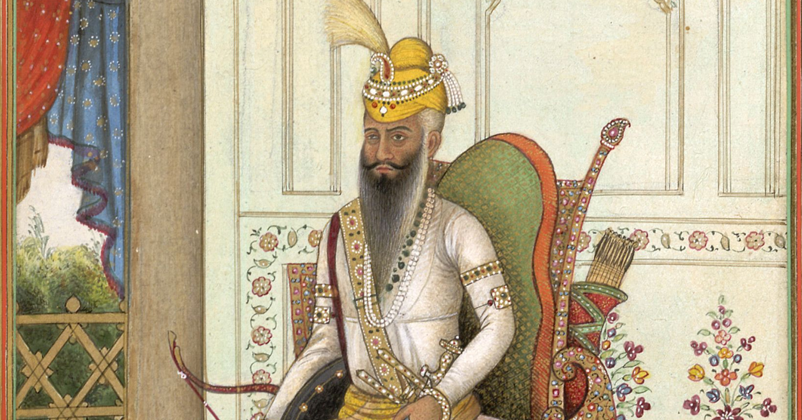13 November, 1780: Remembering "Lion Of Punjab" Maharaja Ranjit Singh on his birth anniversary
13 Nov 2023 13:15:30

Maharaja Ranjit Singh, also known as the Lion of Punjab, was the founder and the first Maharaja of the Sikh Empire in the early 19th century. He ruled from 1801 to 1839 and played a crucial role in uniting the Sikh factions into a powerful and cohesive state in northern India. Ranjit Singh was known for his military leadership, secular governance, and fostering a diverse and inclusive administration.
Maharaja Ranjit Singh’s birth anniversary is celebrated on November 13th. He was born on this day in 1780 in Gujranwala, which is now in modern day Pakistan. As a child, he suffered smallpox which resulted in him losing one of his eyes.
Ranjit Singh’s father Mahan Singh was the chief of the Sukerchakai misl estates or confederacies. He became the leader of the Sukerchakai Misl at the young age of 12 after the death of his father. He gained fame and recognition when he defeated the army of Afghan ruler Shah Zaman who attempted to annex Punjab.
Ranjit Singh gradually expanded his territory, capturing Lahore in 1799 and establishing the capital of his empire there. The Sikh Empire existed from 1799 till 1849. At the empire’s peak, it extended from Khyber Pass in the west to western Tibet in the east, and from Kashmir in the north to Mithankot in the south. It started with Ranjit Singh’s annexation of Lahore from the Afghans in 1799. He successfully united all the Sikh misls under his rule. The major towns in Ranjit Singh’s empire were Lahore, Amritsar, Multan, Peshawar, Jammu, Srinagar, Rawalpindi and Sialkot.
On 12 April 1801, Ranjit Singh was declared the ‘Maharaja of Punjab’. Known for his military acumen, he forged a formidable army that included both Sikhs and non-Sikhs. Ranjit Singh’s army was known as the Khalsa army and he modernised it and improved its training.
Despite being a Sikh ruler, he adopted a policy of religious tolerance, appointing leaders from different communities in his administration.
Ranjit Singh was a patron of the arts and culture. His court, the Lahore Durbar, flourished with poets, musicians, and artists. This cultural renaissance contributed to the rich heritage of the Sikh Empire.
He undertook various infrastructure projects, including the construction of forts, roads, and irrigation canals. The city of Lahore saw significant development under his rule.
Ranjit Singh engaged in diplomatic relations with neighboring states and signed treaties to secure the borders of his empire. His diplomatic skills helped maintain a balance of power in the region.
Maharaja Ranjit Singh’s most lasting legacy was the restoration and expansion of the Harmandir Sahib, the most revered Gurudwara of the Sikhs, which is now known popularly as the “Golden Temple”. He contributed to the beautification and maintenance of key Gurdwaras, particularly in and around Amritsar, the holiest city in Sikhism. The Golden Temple (Harmandir Sahib) in Amritsar, for example, received attention and support during his rule, including the application of gold leaf to the upper floors, giving it the distinctive appearance it has today.
Maharaja Ranjit Singh died on June 27, 1839, in Lahore. While his reign brought stability and prosperity to the Sikh Empire, the challenges of succession after his death eventually led to its decline in the mid-19th century. Despite this, Maharaja Ranjit Singh's contributions left a lasting impact on the history and culture of the region.